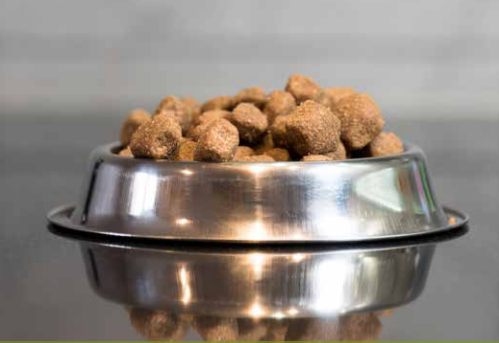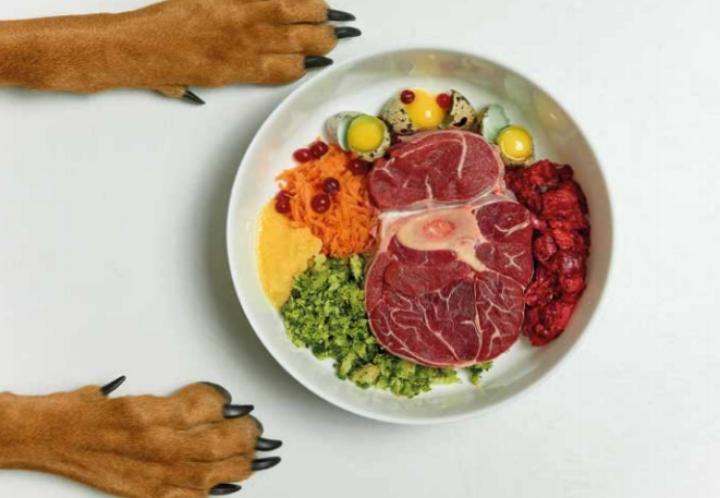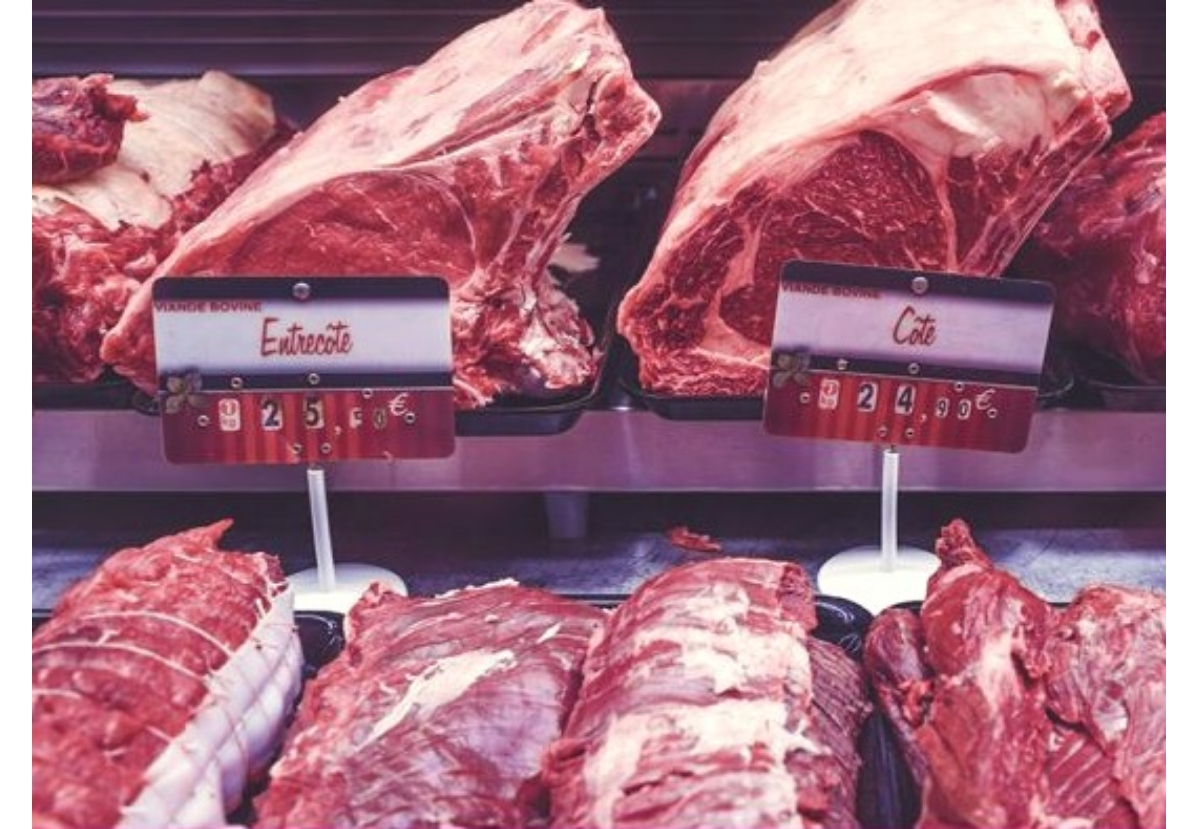In our note in the Agroindustria Magazine of its edition No. 147, we made a general description of the historical fiber and the new forms accepted by international organizations. We also told about the types of fiber offered by the market, functions, virtues and where we wanted to continue seeding the field of fiber systems.
Aiming that there are more and more professionals, technicians or those responsible for thinking, assembling and deciding the ingredients in pet diets, we invite you to consider and incorporate these parameters of dietary fiber, soluble and insoluble in their formulators. We are going to see throughout this note the importance of including them, and how it became a market trend, a point that we are going to corroborate with the conclusions. They ask us for more, more specific suggestions, type of application, inclusion rate and times. And perhaps the answer is: the most successful combinations between them. They also raise many doubts, which we will try to guide, based on our own experiences or those of others; and we will leave the door open to co-create, to think about it together, to achieve the best solution in each case.
Total dietary fiber is made up of insoluble (FI) and soluble (FS) fiber.
Insoluble fibers, they are not insoluble in aqueous media such as intestinal and classic examples are the structures of vegetables: lignin, cellulose and some hemicelluloses.
Cereal grains are especially rich in water-insoluble fibers, found in greater amounts in wheat and corn. They have a sponge effect, they are able to retain water in their matrix, several times their own weight, forming low viscosity mixtures. They lead to an increase in fecal mass and a greater acceleration of intestinal transit. They are not very fermentable because they resist the action of microorganisms in the intestine. This is why the logic of using insoluble fiber in the treatment or prevention of constipation.
Soluble Fibers, their solubility simply refers to the fact that they dissolve in aqueous media. They are viscous fibers, which form gels naturally and their range is very varied depending on how simple or complex their chemical structure is and whether or not they have the ability to be prebiotic. For example, going to the smallest or simplest: oligosaccharides (fructooligosaccharides, galactooligosaccharides, xylooligosaccharides, and isomaltooligosaccharides), inulin. And if we go to something larger or complex, we find: pectins, hydrocolloid gums, resistant starch, polysaccharides from algae, non-digestible sugars polydextrose, methylcellulose, carboxymethylcellulose, hydroxymethylpropylcellulose and others.
If we cite some ingredients rich in soluble fiber, we find legumes, oats, barley, beets, carrots, apples and many other fruits and vegetables.
Fermentability of dietary fiber: it is the digestion process that takes place under anaerobic conditions in the large intestine, where bacteria, with their numerous enzymes, can digest it to a greater or lesser extent depending on its structure. This process is fundamental, since thanks to it the development of bacterial flora takes place, as well as the maintenance of the integrity of the intestinal epithelium, which is relevant for the absorption and metabolism of nutrients.
Both soluble and insoluble fibers live in a flexible balance and well associated achieve important health benefits.
SEASON II: AND THE WINNER IS ...
What makes fiber so important?
What describes our product beyond how attractive our packaging may be. This point is very important to answer us and the first thing we must be clear about. The degree of fiber contribution in our food gives a visible result by the owner, as few ingredients, since it will define the type of feces and presence of gases.
If we make a mistake in the formulation, in the chosen ingredients or in their balance, we may end up in diarrhea or gas formation in the animal, where the direct responsible will be the content of that bag with which they feed their pet daily. .
And with this ingredient we will be closer to the right path: better quality feces, easy to collect and minimal gas formation. Up to substantial improvements in digestibility and absorption. Being a great complement to prevent pilobezoars, gastric dilation and volvulus, obesity, diabetes and kidney diseases.
Pet nutrition is currently increasingly focused on the use of food (digestibility studies) and on improving human-animal interaction as much as possible. Among this interaction is also the fact of how to reduce the number of stools per day, improve fecal characteristics, consistency, moisture and odor.
It is also sought with commercial foods, not only an appreciable body condition, including fur, but also the prevention of diseases.
How will fiber do that?
Each part of the fiber system fulfills its function.
An INSOLUBLE will absorb water and act as ballast to keep traffic active, without pause.
Movement Yes always, Speed No
The other SOLUBLE will form a viscous solution from the stomach, slowing gastric emptying, generating satiety and decreasing appetite. Already in the large intestine, depending on the type of fiber, it can only improve the pH of the medium or it will also have a great capacity to be fermented.
This fermentation will be able to multiply bacteria and the more bacteria, the greater the digestion of everything that was not previously digested by gastric and duodenal enzymes. It improves the general digestibility and in particular the protein digestibility.
Passage rate: it is the physical variable that we determine with the fibers.
Digestion depends on enzymes and the rate of flow within the intestine (rate of passage).
This will determine the contact between enzymes and food and between nutrients and absorbing surfaces.
Digestibility: information on the chemical composition of a food is of little use if its digestibility is unknown. Digestibility studies are used as a measure of quality. A highly digestible food results in a greater amount of nutrients available for intestinal absorption, therefore, a less necessary amount of food to satisfy requirements.
Factors that affect the digestibility of the feed:
Although there are multiple factors that can affect it, such as the quality of each raw material, time since harvest, process variables, temperatures, pressure, etc., several authors agree that excesses in the inclusion rate of fiber, especially insoluble ones, It will give fiber the ability to affect its own digestibility as well as that of other nutrients, such as protein and carbohydrate digestibility.
Understanding that the variable 'fiber' is one of the essential factors in this regard.
Fiber-linked digestibility
Different authors concluded that the inclusion of increasing levels of crude fiber in pet diets negatively affects the digestibility of dry matter. Mainly due to an increase in the rate of passage and less contact with food enzymes.
As after the inclusion of prebiotic soluble fibers, changes are observed in microbial populations that lead to greater digestibility of nutrients at the hindgut level. In vivo studies on prebiotics such as fructooligosaccharides and inulin have shown encouraging results, attributed mainly to their effect on fiber utilization, the apparent absorption of calcium and phosphorus, and the modulation of hindgut fermentation.
The daily production of feces has an inverse relationship with the digestibility of the food. As the digestibility of the diet increases, the stool volume decreases and solid, better-formed stools are produced.
At the same amount of food consumed, with a difference in digestibility respectively.
Heces quality: they can be evaluated quantitatively (number of daily defecations, weight, DM content, pH) and qualitatively (visual classification) considering consistency and shape, applying a numerical scale.
Fiber increases the volume and water retention of the intestinal content, is fermented by the colon microflora with the production of volatile fatty acids and lactic acid, modulates intestinal transit time and different authors suggest that it is necessary to include a certain amount of fiber to maintain the health and optimal function of the entire gastrointestinal tract, as well as for the control of body weight and the treatment of obesity, since they lead to a state of satiety of the animal.
The optimal amount of fiber inclusion occurs when the stool is soft enough to prevent constipation, but firm enough to prevent diarrhea.
Fiber size and absorption capacity
The different effects of the fiber will depend on the physical characteristics of the fiber. Trials observed that different sizes of insoluble fiber particles produced different effects and that the largest size, 200 to 300 microns, was the most effective in producing better quality feces, compared to fibers of smaller size 30 to 70 microns.
Fecal PH is the thermometer of the intestinal microbiota.
It is a parameter that is directly related to the fermentative activity of the intestinal microflora. Greater fermentation, higher levels of volatile fatty acids and lactate that can be used by the animal as a source of energy, maintain the health of the intestinal epithelium, reduce the incidence of intestinal pathologies and control the proliferation of pathogenic microorganisms by reducing the pH.
The ingredients of the diet that are not digested and absorbed in the small intestine pass to the large intestine where they are fermented by the microbiota. In addition, the addition of fermentable fiber to the diet of dogs leads to an increase in the production of acetic, propionic, butyric and lactic acids, being fructooligosaccharides the ones that generate a faster production of these and together there is a decrease in fecal pH. Fecal pH values were reported that were between 6.5 to 6.8 for dry diets and 7.0 to 7.1 for semi-humid diets. Lower pH values are associated with VFA concentrations and inversely with fecal NH3 concentration.
With these parameters in mind: Digestibility (consumption - less excreta) - stool pH, volume and consistency, we decided to carry out a few short tests.
SEASON III SUPER ACTION FIBERS
Assay I: randomized crossover experimental with an objective of observation in Excreta Quality and Digestibility.
Using as a base a Premium commercial food, applying a 4% inclusion rate of dietary fiber and whose only variant was the type of fiber. Using a common ingredient like beet pulp vs. a predetermined fiber system, both ingredients with the same percentage of total dietary fiber: 65%.
For 10 days in 10 dogs. Average results:
Dry Matter Digestibility 74%. Crude Protein Digestibility 81% (1.5% better for fiber system). Digestibility of the Ethereal Extract 93%.
For more challenge, at the end of the trial we added a period with overeating. A diet twice the intake to cover the maintenance requirement. No physical or physiological alteration compatible with a pathological state was observed in any of the treatments.
Observations: We did not obtain significant differences. They both gave very similar performances. The fiber system had a plus of prebiotic fibers, which had not manifested.
Conclusion: After months of analysis and research we reached the deduction that the trial time was not enough to see manifestations of the ingredients in the food. The intestinal microbiota is progressive and adaptive.
A new challenge in inclusion rate and time.
Assay II: experimental crossed, random with objective of observation in and Quality of Excreta and Digestibility.
As a base we use a Premium commercial food using a frequent ingredient such as beet pulp at a 3% inclusion rate vs. Default fiber system at 4% inclusion rate.
Both ingredients with the same percentage of Total Dietary Fiber: 65%.
For 40 days in 6 dogs.
Total Digestibility: It was 6.7% higher for the fiber system. Average Deposits: It was 5% lower for the fiber system. Moisture percentage: It was 1.5% lower for the fiber system.
Results: we observed the effect of the soluble and insoluble combination (predetermined fiber system) and the evident contribution of prebiotics.
Conclusion: Marked effect on digestibility.
Can you jump from an economic food category to Premium only by varying the type of Fiber?
Organizations such as the European Pet Food Industry Federation (FEDIAF), NRC (National Research Council) and the AAFCO (Association of American Feed Control Officials), agreed on the dry matter digestibility criterion (dMS) as one of the parameters to classify food according to its nutritional adequacy in standard, premium and super premium. Qualifying as generic or standard those with dry matter digestibility close to 72%.
Understanding that, without being a rule, the premium and super premium are made with higher cost ingredients, of quality and more stable formula, whose dry matter digestibility is greater than 78%, with firm and scarce stool production.
Greater digestibility, lower stool production and better feces consistency.
Tips for soluble fibers:
They develop the intestinal microbiota and that is a process that requires a few weeks, it has no magical effect.
The smaller, 4 to 10 monosaccharides in the chain, the BETTER, the faster they will be fermented, from the first portion of the intestine, already from the ileum. The larger and more complex they are, we run the risk that they end up being fermented in the colon where there is a greater amount of methanogenic and undesirable bacteria.
Low Ph in stool. Good sign!
Thermosets: check with the supplier that they are thermostable and that they withstand the temperatures of the extrusion process.
Soluble: that is, they are completely solubilized in aqueous medium as they would in the intestine. It is simple to taste, in a glass of water and simple shaking.
Prebiotics: not all soluble fiber serves as food for beneficial bacteria. And it can even feed pathogenic bacteria.
Being prebiotic opens a range of virtues to food. In the microbiota cycle - volatile fatty acids - Gut-related immunity.
Tips for insoluble fibers:
Consider all the ingredients. All vegetable ingredients add up to this parameter. The value of the insoluble is riskier by excess, than by default.
Authors prefer that they absorb the greatest amount of their weight in water.
Size: the bigger the better, 200 to 300 microns.
An insoluble fiber can be moderately fermented and, as it has less water retention capacity, it can lead to better quality stool.
Trends in fibers: more and more the industry seeks the inclusion of fruits such as apple, citrus, red fruits. And vegetables like Carrot, celery and legumes. All of them associated with the value of their dietary fiber.
Industrial flexitarianism: A prebiotic fiber ensures a superior intestinal microbiota mass.
With this optimal mass of bacteria, we ensure that the modifications we make in the formulation of ingredients or even variations in quality within the same ingredient, as occurs in animal meals, if they are not digested gastrically or intestinally, then they will have a high possibility of being fermented by these bacteria.
Finally, we will compensate for digestibility and maintain the quality of excreta.
Pets are members of the family and as such, aspects of their care are increasingly being considered that bring them closer to humanization in some way. From clothing, accessories, treats and more products intended especially for dogs and cats that most often integrate them into the lifestyle of the people who care for them.
There are many examples that we can share, based on global trends. The routine contemplates, the game, the walk, the daily "mime" and the food without a doubt is a fundamental part of this routine.
It is for all this that we have expressed that we are extremely willing to explore the world of ingredients in the nutrition of our pets.
Authors:
1. Gonzalo H. Garriz.
2. Hermes Villalba.
3. Valentin Braggio. Ingredion Argentina. Animal Nutrition Team
1) Veterinarian. Technical advisor in Animal Nutrition Hermes.
2) Zootechnician. Technical advisor in Nutrition.
3) Veterinarian. Technical advisor in Animal Nutrition.
Source: CAENA
You could be interested: Double Standards for by-products



































